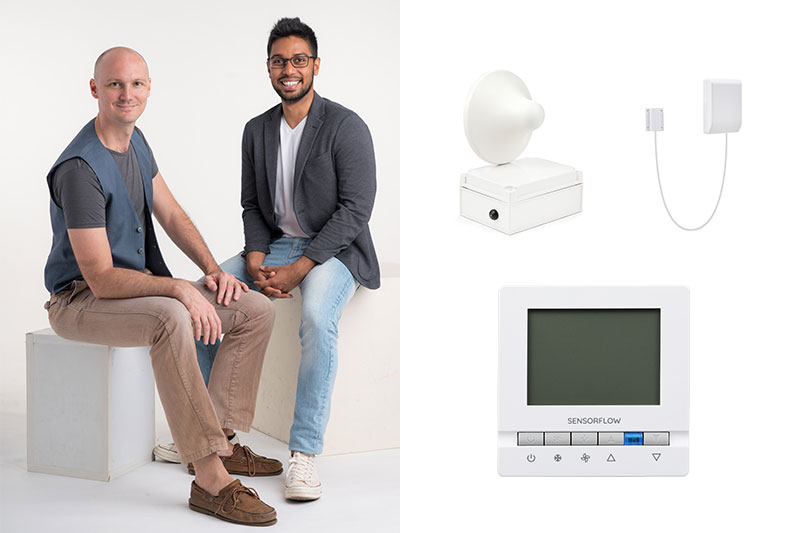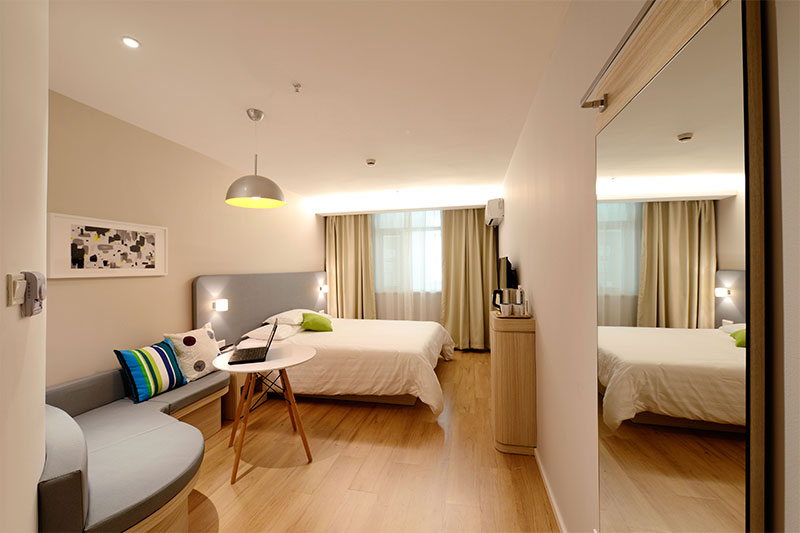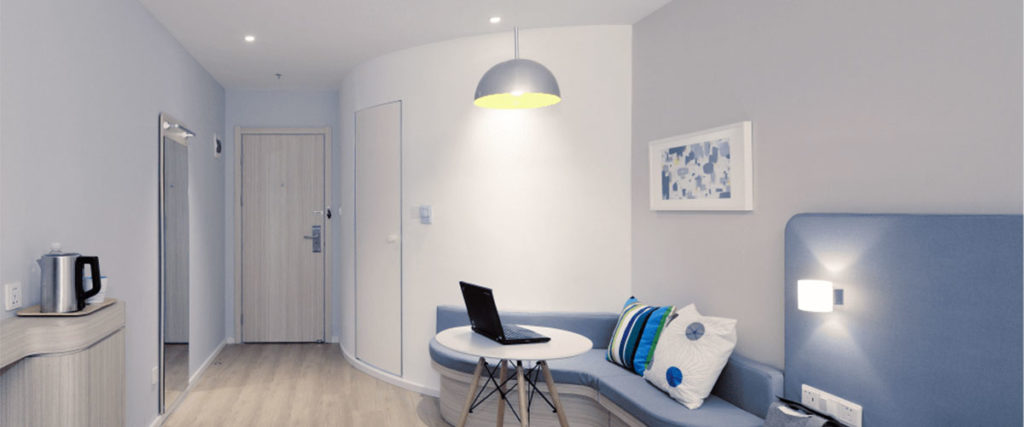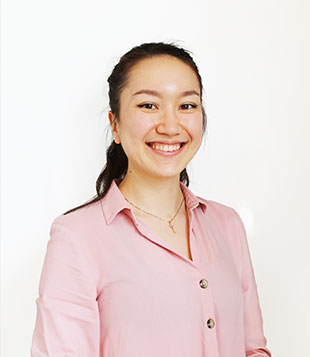Singapore-based startup SensorFlow provides smart wireless Internet of Things (IoT) energy management solutions that monitor, analyse and automate your hotel’s energy efficiency.
Energy demand in Southeast Asia is expected to grow by an astounding 60% by 2040, with the hospitality sector being one of the main culprits. In Singapore, a city that has been warming twice as quickly as the world average over the past six decades, with temperatures rising at about 0.25 celsius per decade, it’s become more important than ever for businesses to identify new opportunities for energy optimisation in order to maximise benefits for both the climate and the people. Despite this, serious sustainability investments are often impeded by how disruptive new installations can be to a hotel’s existing systems, leading to decreased occupancy as a result of closures.
Counted among ‘Southeast Asia’s Top 7 Smart Innovations Helping Energy Transition’ by Eco-Business, Singapore-based startup SensorFlow is charting the course to a greener hotel industry through its IoT solutions, using AI-driven, wireless sensors that can deliver up to 30% in energy savings per room per year, as well as a 40% reduction in maintenance costs. In the space of four years, SensorFlow has signed on over 10,000 rooms across seven countries (namely Singapore, Hong Kong, Malaysia, Cambodia, Vietnam, Thailand and Indonesia) and made sustainability deals worth SDG 3.8 million with global hotel chains and local niche properties alike. They recently secured USD 8.3M in a Series A+ funding round, led by Pierre Lorinet, in April 2020.
We sat down with Entrepreneur First alumni and co-founder of SensorFlow, Saikrishnan Ranganathan, to share his insights. “Asia definitely has a lot of potential. Statistically, demand for better solutions in this space is expected to double by 2035. We’ve seen a lot of Asian countries like India, Indonesia and the Philippines making solar one of their main sources of energy – and so, for this reason alone, I believe the cleantech industry is one that will only continue to grow.”

Sai’s story begins in 2009 when he moved to Singapore to study electrical engineering at National University of Singapore (NUS), majoring in design thinking. Along the way, he built numerous applications with his friends, including a bill-splitting app for divvying up group expenses across different phones, and an app that let cab drivers find their passengers’ exact locations via GPS. “So effectively what Uber is now, in a much more limited fashion,” Sai explains. After graduating, he worked as a technology analyst at Goldman Sachs before hanging up his corporate hat one year later to reenter the startup scene, where he joined Intraix’s three-man team on their energy-monitoring and smartphone automation project. In 2016, he joined Singapore’s first-ever Entrepreneur First cohort to hone his technical expertise, and it was there that he met fellow IoT enthusiast and future co-founding partner, Max Pagel.
You might also like ORII: The Smart Ring that Promises a Future of Screenless Connectivity
The idea for SensorFlow came about when they both saw three major flaws in how IoT worked. “Firstly, it was very hard to retrofit these solutions with existing legacy systems. Secondly, it was very expensive to buy these solutions upfront. And thirdly, there was a lack of vertical integration between software and hardware. If you look at most IoT solutions, you have a software company that’s needing hardware from somewhere else, a hardware company that’s meshing together some software stack on top of it. And so there’s a lot of fragmentation, which leads to a really poor end-user experience.” They also saw massive potential for affordable, non-invasive IoT applications in the hotel industry. “We realised that hotels make huge amounts of sense because their second-biggest expense is energy costs, and their first biggest expense is staff costs. With the data we envisioned collecting, we could bring down both these costs.” With Sai’s software and data background, and Max’s hardware and wireless network background, the pair built their first integrated wireless network stack together. This was no easy feat, given that most IoT offerings catered to single room scenarios, as opposed to building scenarios. “As it stands, IoT technologies are not very scalable from both a cost or time perspective. So what we did was take a very low-power, low-bandwidth, long-range wireless network called Aura and we engineered a network stack on top of that, making it super easy to power, collect data from, and automate devices within an entire building in no time.” In layman’s terms, Sai and Max had created a seamless retrofit solution that allows hoteliers to analyse hotel room environments for smart and pre-emptive air conditioning (A/C) automation across an entire building. Most notably, the entire network can be installed in under five minutes with zero upfront costs.

So how does it work exactly? The product comprises four tightly integrated wireless devices: an occupancy sensor, a smart thermostat, door sensors, and energy meters. Collectively, they offer top-level decision-makers real-time data insights on temperature, humidity and external weather conditions, as well as energy consumption, occupancy trends and guest behaviour. If a hotel room is unoccupied, for example, SensorFlow automatically turns off the A/C and, upon their return, switches back to the guest’s preferred temperature. This ensures better management at a property and portfolio level as hoteliers are able to move from reactive measures to more predictive maintenance strategies without intruding on guest comfort. “About 10-15% of the engineering/housekeeping team’s time is wasted visiting the wrong rooms. With real-time occupancy data, we can create a new workflow that improves their productivity without intruding on their guests’ time. So instead of blocking off all rooms to service A/Cs on a regular basis, they can service them only when things start to deteriorate.”
The product was met with resounding success which Sai attributes to SensorFlow’s popular ‘Pay As You Save’ model. “What this means is that hotels don’t need to pay anything upfront. We go and install the solution and they pay us an amount that’s a percentage of the savings they achieve, ensuring they’re always having a return on investment straight away.” This model is also widely used among traditional escrow companies who are able to finance enormous projects like solar farms by reselling that initial investment back to a hotel or building in the form of a service agreement, thus making it attractive to investors.

Sai also accredits their achievement of product-market fit, which involved altering their hardware, as well as the commercial minutiae of their contract. “We had pushback against the design of our product, so we redesigned the occupancy sensor to look like a smoke detector. And that immediately changed the reception because it was so inconspicuous that no guests noticed it – it made sense to them. As long as the form factor looks like something they’ve seen before, the interior designers are sold,” says Sai. He further acknowledges how working within a hotel’s own model enabled them to unlock a whole other level of success, jumping from 120 hotel rooms to 10,000 in less than 12 months. “Obviously with COVID-19 now and SARS before that, hotel operations can go up and down, but they’re a very resilient industry and know how to get things right. The key is to work against some of their own metrics like occupancy rates, and to give them a product that actually works within their business model.”
Sai predicts bright things ahead for the future of IoT, specifically in regard to overcoming the silos that prevent us from sharing data securely so that their insights can be scaled for bigger contexts. “What I’m seeing with standard bodies is that they take ages to reach any decision and these decisions are always biased by their corporate model.” He points to the recent alliance between Amazon, Apple, Google and Zigbee as a promising example of bodies getting together to create a ubiquitously compatible ‘connectivity standard’ for smart homes. “For me, the big change will happen when we can figure out a way in which any existing system is able to share data securely and use that data to really know the context.”
Having raised USD 2.7 million in Series A funding in February 2019, SensorFlow is on the fast-track to regional domination and hope to realise 50,000 to 100,000 smart hotel rooms in 12-18 months’ time. They are also in the process of forming partnerships with India, China and Japan, and have their eyes set on entering European and U.S. markets by 2022. But it doesn’t stop there. “We’re focusing on hotels now, but I see us branching out into pretty much any commercial building. So malls, warehouses, hospitals, schools – the applications are endless.”
Related Articles
The Taiwanese Startup Building a Smarter City with Life-Saving Systems
This Japanese Entrepreneur is Developing Smart Pyjamas for an Ageing Population
Vietnamese Architecture Firm VTN Architects is Building Greener Cities





